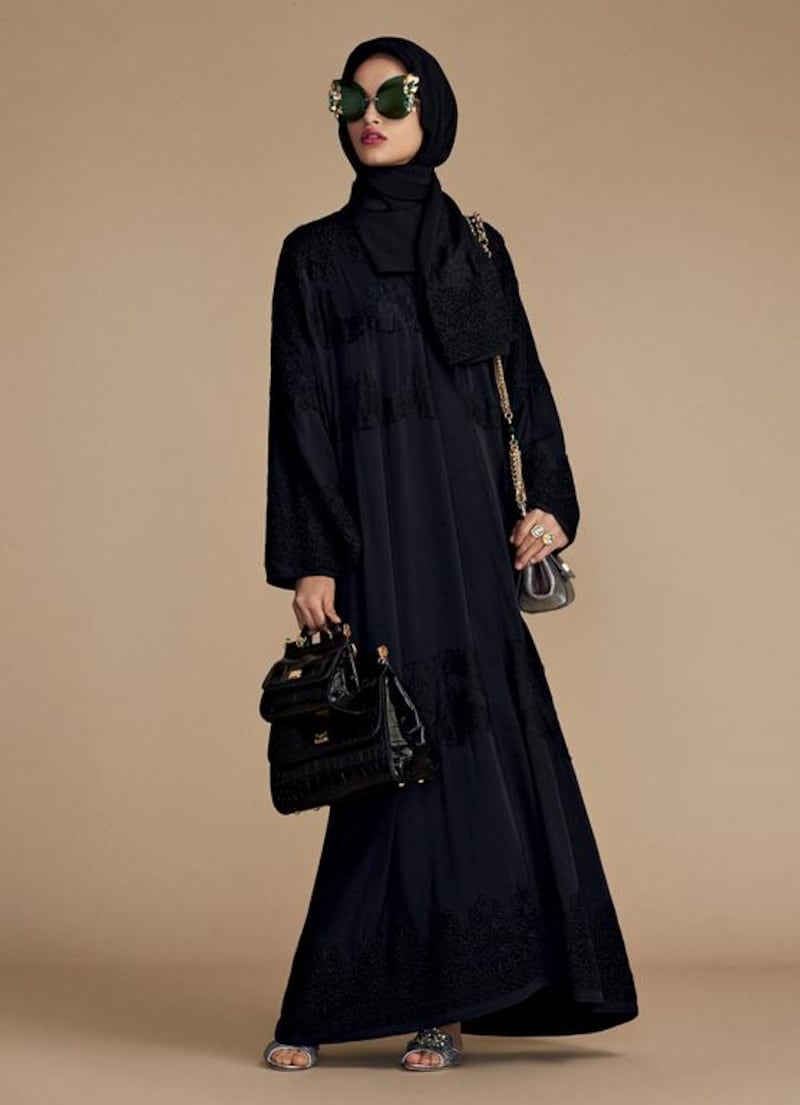In the past decade the plain black abaya has undergone a transformation, with dramatic changes in cut, fabric, design and colour. The changes to such an iconic, regionally important clothing not only reflect a fashion evolution, but a major shift in attitudes and lifestyles.
Still, wearing anything other than a plain, black abaya can be a complicated change for Emirati women, many of whom choose to continue to embrace tradition for a variety of reasons.
Those were the findings of research carried out by Lezley George, who is completing her doctorate in fashion cultural theory at The London College of Fashion, with a special focus on fashion identities and practices in the UAE. She presented her paper – Back to Black? Abaya Culture, Identity and Fashion in the UAE – last month during the 50th Seminar for Arabian Studies at the British Museum in London.
“Do I think black is the star? A lot of women I spoke to thought so,” she says. “I think women should have a choice to wear black some days, and not other days.”
With more than 20 years of experience as a fashion designer and her own label, George says she has always been keen to seek out home-grown designers.
She started to focus on the design and craft of abaya-making, particular in the wider context of fashion in the UAE, after arriving in the country more than eight years ago.
She interviewed 70 local abaya wearers, designers and industry influencers between the ages of 18 and 70 for her paper between June last year and June this year. The abaya styles they wore varied from the most conservative traditional designs to the latest high fashion.
“The move away from black did challenge perceptions that traditionally the abaya should be black or predominantly black,” she says. “Although most felt that if a woman wished to wear a coloured abaya this was her decision, many did recount tales of colleagues who were advised to not wear colours to work, and some agreed that this was a good move.”
While different types of abayas can help women blend in or stand out, ultimately its purpose is to protect a woman’s modesty in line with Islam and local culture.
Many believe the emergence of more colourful options originated in the cosmopolitan city of Jeddah in Saudi Arabia, a shift that triggered some resistance from the community.
One well-known designer from the UAE told George: “I remember when I wore my first brown abaya and brown shayla – I was very conscious and people would be looking at me.”
“Curtains” was one word used to describe coloured abayas, and many of the women George spoke to told her about video clips on Snapchat and YouTube filmed by young men who followed women, commenting on which room in the house their “abaya-as-curtain” belonged to. “Men’s reaction to coloured abayas came up a lot in my interviews, and initially I was surprised to find that young men were critical of this new trend,” says George. “Many did point to family pressure, and that though this was not solely male-driven, there was an underlying current which was strongly linked to appropriate public image.
“The coloured abaya heightened issues of visibility and, due to the comments made to me regarding some young men’s lack of acceptance, seemed to make some women think twice before allegedly appearing too independent or too modern.”
Asma, another designer, said: “What have you got that is not black? Because I have had enough of wearing black.”
Fifteen months after launching a fashion label in 2014 to cater to the changing abaya tastes, Asma told George that the demise of colour was mainly due to “familial pressure” applied by male family members who want women to blend in.
The black abaya is linked to identity as a citizen, and therefore communicates societal status, as well as signifying a religious and cultural identity, says George.
“Images of women are seen as representing the nation – an example is woman as mother and protector of cultural values,” she adds. “So as cultural transmitters, abaya-wearing women’s appearance is more regulated and judged in line with Islamic and traditional practices.”
rghazal@thenational.ae





